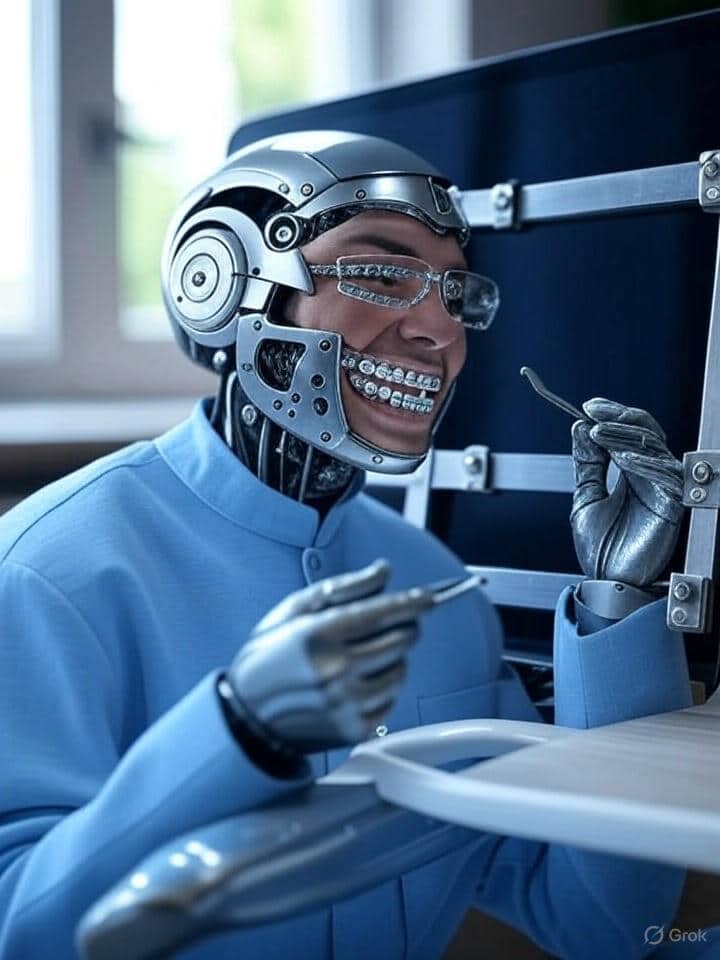A little over 4 months ago I posted a blog article to the effect that Congress had authorized artificial intelligence (AI) and machine learning health practitioners who could even prescribe drugs! I have often wondered how AI might find applications in Dentistry and how regulatory agencies – given the federal authorization – might receive it. Unlike the practice of medicine, Dentistry is mostly a “hand-on” discipline and unless practices are to adopt robotics for treatment – and at what cost – I personally can’t see AI actually “treating” patients. Medicine on the other hand, in some disciplines – for example psychiatry or psychology – there is much opportunity for AI to become significantly involved in patient management.
In Dentistry, however, the only discipline I can see where an AI healthcare practitioner could find a place is possibly in facial pain or TMJ disorders – nothwistanding already existing AI technologies like providing radiographic interpretation assistance within some practice management systems. This capability already exists more broadly in medicine and I think would provide great promise in the interpretation of more complex examinations such as computed tomography.
But though I am intrigued at the prospect of a facial pain / TMD AI practitioner, I think we’re not there yet – obviously. It may be years away before practices may have a chatbot on their websites to help patients. So, not so much on the horizon for an AI healthcare practitioner in Dentistry – for now, right?
Think again – it’s already here and you don’t even know it. Licensing boards don’t even know it. What’s the AI healthcare practitioner?
It’s “clear aligner therapy” – also known more widely as “Invisalign” or ClearCorrect, Byte, and the former “Smile Direct Club”.
Why do I say “clear aligner therapy” is an AI healthcare practitioner? Well…think about a couple of facts:
- Invisalign – the name synonymous as the first clear aligner AI orthodontic practitioner – used numerous orthodontic case studies to create a database to generate predictive treatment models. Today, clear aligner companies use AI to predict final hard and soft tissue clinical outcomes, design bracket placement, mill placement stents, the number of trays necessary, the movements contained within each tray, etc. You provide the clinical data, and AI generates the treatment plan. And AI is now even monitoring the progress of patients.
- While clear aligner companies may employ orthodontists, it’s inconceivable that one is overseeing the treatment planning or progress of care.
- While these companies employ technical assistance to facilitate patient care, they are obviously NOT trained orthodontists
- Though all dentists – specialist and non-specialists alike – are ultimately responsible for patient care, clear aligner therapy has become so well accepted within lay and professional circles it has almost become the de facto gold standard within itself. And patients want it.
- Most of the litigation surrounding clear aligner therapy are regarding antitrust or monopolistic practices as there are no widely known publicly available poor treatment outcomes. Furthermore, licensing boards have a favorable view of this therapy and while it is implicitly understood licensees are “ultimately responsible” for the treatment, they also know the actual treatment is generated and managed by the AI algorithm with the doctor as an observer – with the level of involvement completely depending upon one’s clinical expertise.
In essence, the clear aligner vendor has created an AI orthodontic practitioner which is managing the mechanics and monitoring the progress of a patient’s tooth movement. It is – by all appearance – immune from litigation and largely eliminates risk especially for the integration of orthodontics in a general practice.
The AI Orthodontic Practitioner through it’s use of clear aligner therapy is without question the best kept secret and most understated fact in Dentistry.

